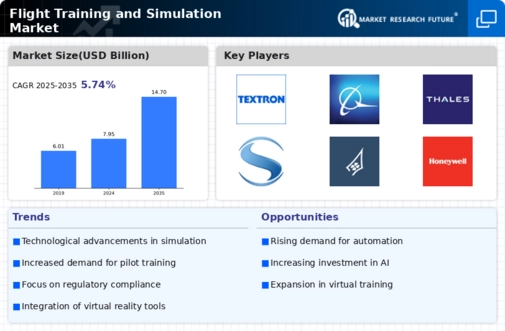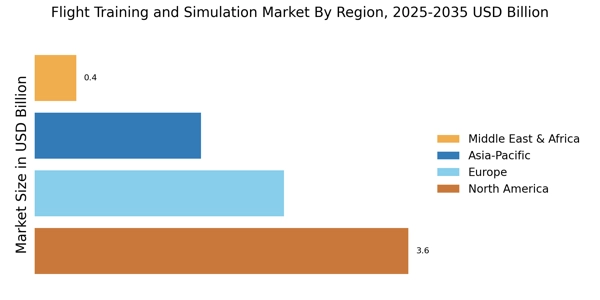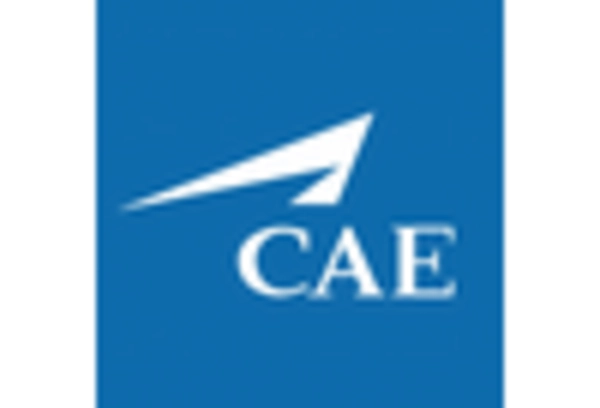The Flight Training and Simulation Market is currently characterized by a dynamic competitive landscape, driven by technological advancements and an increasing demand for skilled pilots. Major players such as CAE (CA), FlightSafety International (US), and L3Harris Technologies (US) are at the forefront, each adopting distinct strategies to enhance their market positioning. CAE (CA) focuses on innovation through the development of advanced simulation technologies, while FlightSafety International (US) emphasizes partnerships with airlines to provide tailored training solutions. L3Harris Technologies (US) is leveraging its expertise in digital transformation to integrate AI into training programs, thereby enhancing the learning experience and operational efficiency. Collectively, these strategies contribute to a competitive environment that is increasingly reliant on technological prowess and strategic collaborations.
Key business tactics within the Flight Training and Simulation Market include localizing manufacturing and optimizing supply chains to enhance responsiveness to regional demands. The market structure appears moderately fragmented, with several key players exerting influence over various segments. This fragmentation allows for a diverse range of training solutions, catering to different customer needs while fostering competition among established and emerging companies.
In August 2025, CAE (CA) announced a strategic partnership with a leading airline to develop a new pilot training program utilizing cutting-edge simulation technology. This collaboration is poised to enhance training efficiency and effectiveness, reflecting CAE's commitment to innovation and customer-centric solutions. Such partnerships not only bolster CAE's market position but also signify a trend towards collaborative approaches in training methodologies.
In September 2025, FlightSafety International (US) unveiled a new suite of virtual reality training modules aimed at improving pilot situational awareness. This initiative underscores the company's focus on integrating advanced technologies into its training offerings, potentially setting a new standard in the industry. By enhancing the realism of training scenarios, FlightSafety International (US) aims to better prepare pilots for real-world challenges, thereby reinforcing its competitive edge.
In October 2025, L3Harris Technologies (US) launched an AI-driven analytics platform designed to optimize training outcomes for aviation professionals. This platform is expected to provide actionable insights into pilot performance, enabling more personalized training experiences. The introduction of AI into training processes indicates a significant shift towards data-driven decision-making in the industry, positioning L3Harris Technologies (US) as a leader in technological integration.
As of October 2025, the Flight Training and Simulation Market is witnessing trends such as digitalization, sustainability, and the integration of AI technologies. Strategic alliances are increasingly shaping the competitive landscape, as companies recognize the value of collaboration in enhancing training capabilities. Looking ahead, competitive differentiation is likely to evolve from traditional price-based competition to a focus on innovation, technological advancements, and supply chain reliability, suggesting a transformative shift in how companies approach market challenges.


















Leave a Comment